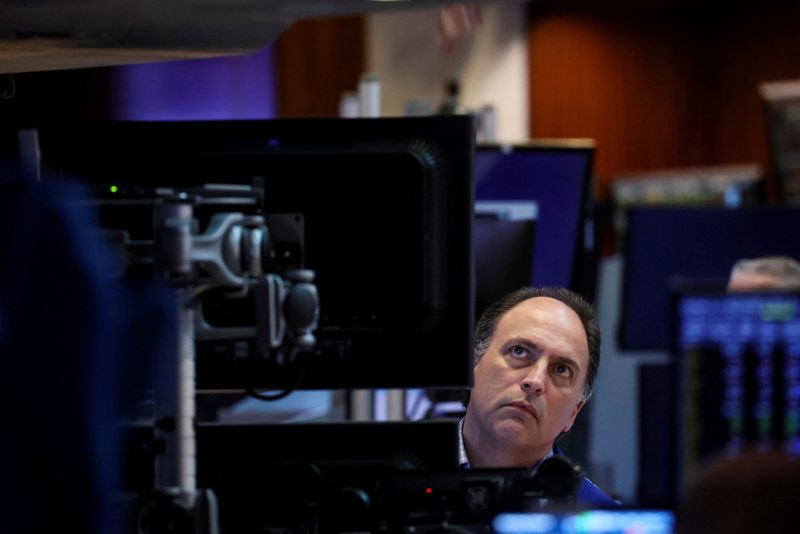Table of Contents
Hold onto your hats, because the week ahead promises a whirlwind of market-shaking revelations. Investors are bracing themselves for the unveiling of key inflation data on Wednesday, a potential game-changer that could illuminate the Federal Reserve’s next move, possibly a rate cut in September. But that’s just the beginning. With markets teetering on the edge of volatility, retail earnings and geopolitical tensions add extra layers to this complex puzzle. Here’s a deep dive into the chaotic currents likely to influence markets in the coming days.
1. CPI Data: The Nail-Biter
July’s Consumer Price Index (CPI) data is poised to be the week’s main event. Investors, economists, and even the Fed itself are on tenterhooks. Will inflation finally slide closer to that elusive 2% annual target? A report showing only a modest dip could soothe fears that the Fed’s aggressive stance has dragged the economy into a nosedive. But beware—a weak reading could fan the flames of recession fears, sending shockwaves through the markets. And let’s not forget the other players on the economic calendar: July’s retail sales figures and the weekly jobless claims report. They might not be the headliners, but they’ll still pack a punch. Meanwhile, a trio of Fed officials, including the ever-cautious Atlanta Fed President Raphael Bostic, will be stepping into the spotlight to offer their takes. Will they hint at a cooling inflation or throw more fuel on the fire?
2. Volatility Risk: The Tightrope Walk
Market nerves are frayed after last Monday’s stomach-churning stock market plunge, fueled by recession jitters and the unwinding of global yen-funded carry trades. While a surprising drop in jobless claims last Thursday managed to pull the market back from the brink, the mood remains tense. This week, all eyes will be on whether the markets have correctly priced in those long-anticipated Fed rate cuts. Will the upcoming economic data justify this cautious optimism, or are we in for another round of turbulent trading? And let’s not ignore the elephant in the room—the conflict in the Middle East, which could easily spiral into a broader confrontation, adding yet another layer of uncertainty to an already jittery market.
3. Earnings: The Final Countdown
We’re in the final stretch of earnings season, but don’t let that fool you—there are still some heavy hitters yet to report. Retail giants like Home Depot (NYSE:HD) and Walmart (NYSE:WMT) are on deck, and their outlook on consumer spending could provide crucial insights into the health of the economy. Is the consumer still resilient, or are the cracks starting to show? Cisco Systems (NASDAQ:CSCO) and Fox Corporation (NASDAQ:FOX) will also be reporting, adding to the data deluge that investors will be sifting through. The market will be hanging on every word, looking for signs of strength—or weakness—in consumer demand, the lifeblood of economic growth.
4. Oil Prices: A Brewing Storm
Oil prices surged last week, buoyed by hints from Fed officials that a rate cut could be in the cards as early as September. This tempered some of the recession fears that had been dragging on demand outlooks. But it’s not just economic policy that’s driving oil; geopolitical tensions in the Middle East are casting a long shadow. With fears of a widening conflict in the region, particularly involving retaliatory strikes by Iran against Israel, the risk of supply disruptions looms large. Brent crude surged over 3.5% last week, with U.S. crude futures not far behind, rising more than 4%. The potential for conflict in the world’s most crucial oil-producing region could send prices skyrocketing, throwing yet another wrench into the global economic machinery.
5. UK Data: The Wild Card
Across the pond, the UK is set to release a slew of economic data that could reshape expectations for the Bank of England’s next moves. Tuesday brings wage growth figures, followed by inflation data on Wednesday, both of which will be scrutinized for signs of stubborn price pressures, especially in the red-hot services sector. Thursday’s GDP data is expected to show anemic growth for June, but a modest 0.6% expansion for Q2 overall. And on Friday, retail sales data might offer a glimmer of hope with an expected rebound after last month’s dip. Earlier this month, the Bank of England made its first rate cut since 2020, but with markets pricing in a roughly 33% chance of another quarter-point cut in September, this week’s data could tip the scales.

